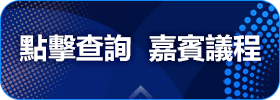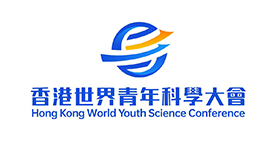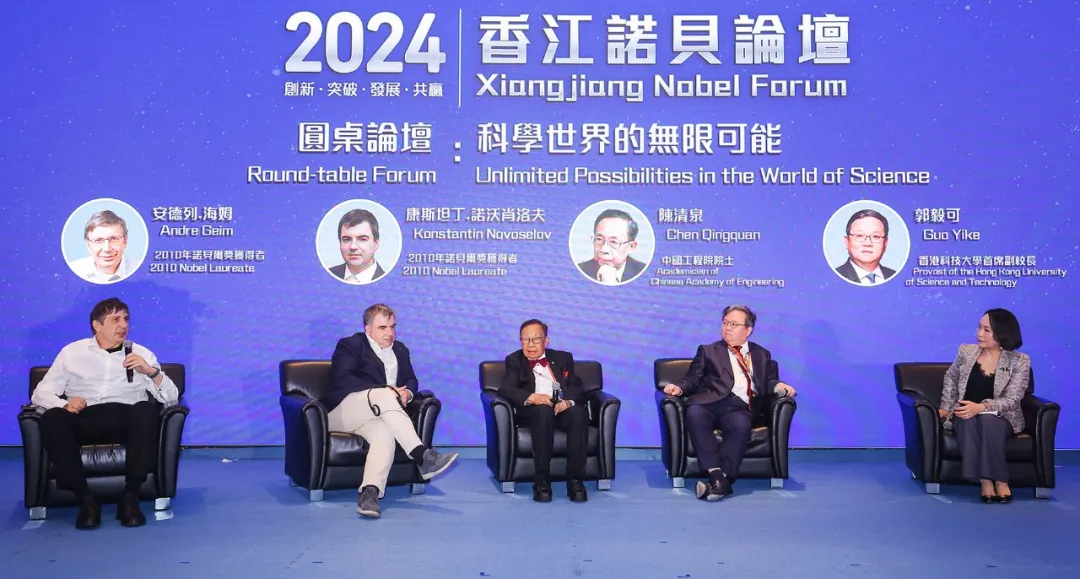





因地製宜 新質生產力
Tailor measures to local conditions for the development of new - type productive forces
推動盛世經濟
Promote a prosperous economy
國際高端人才集聚高地
An Agglomeration Hub for Global High - end Talents
全球領先國際創科中心
Globally Leading International Science and Technology Innovation Center
新動能新優勢
New momentum and new advantages
經濟高質量發展
High - quality economic development

 English
中文
English
中文
-
首頁
Home
- 關於大會 2025 Forum
- 2025大會 AboutTheForum
- 關於香江諾貝論壇 About Xiangjiang Nuobei Forum
- 新聞動態 NewsInformation
- 合作夥伴 Partners
- 聯系我們 Contact us





{{change == 1 ? "請輸入手機號或郵箱" : "Please Enter Phone Number Or Email"}}
{{change == 1 ? "請輸入報名會議時預留的手機號或者郵箱" : "Please enter the phone number or email address reserved when registering for the conference"}}

{{change == 1 ? "議程安排" : "Agenda Arrangement"}}
{{change == 1 ? "嘉賓:" : "Guest:"}} {{change == 1 ? pname : pnameEn}}
- {{change == 1 ? "時間" : "Time"}}
- {{change == 1 ? "議程" : "Agenda"}}
- {{change == 1 ? "地點" : "Location"}}
-
{{change == 1 ? "時間:" : "Time:"}}
{{item.startTime}} - {{item.endTime}}{{change == 1 ? "議程:" : "Agenda:"}}
{{change == 1 ? item.topic : item.topicEn}}
{{change == 1 ? "地點:" : "Location:"}}
{{change == 1 ? item.location : item.locationEn}}
首屆「香港世界青年科學大會」的焦點活動2024「香江諾貝論壇」13日下午在香港會議展覽中心成功舉辦,來自美國、瑞士、荷蘭、挪威、匈牙利等歐美國家的六位諾貝爾獎得主、一位圖靈獎得主和多位海內外科學家等逾五百人參加,共商科學進步、創新發展盛事,推動香港在國際上科學研究領域的世界位置。
2024「香江諾貝論壇」是一場高端學術論壇,學術性嘉賓陣容鼎盛,是香港近年罕見。眾人透過主旨演講和圓桌對話,分享創科前沿議題,探討創科發展方向,並為香港創科發展方向建言獻策,為與會者帶來別開生面的科學世界的遨遊,增強了海內外學術領域的深度探討交流,為香港建設國際創科中心提供前沿高科資訊與智力支持。

部分海外嘉賓有2019年諾貝爾物理獎得主迪迪埃•奎羅茲(Didier Queloz)、2010年諾貝爾物理獎得主安德烈•海姆(Andre Geim)和康斯坦丁•諾沃肖洛夫(Konstantin Novoselov)、2022年諾貝爾物理獎得主約翰•弗朗西斯•克勞澤(John Clauser)、2014年諾貝爾生理與醫學獎得主愛德華•莫澤(Edvard I. Moser)、2019年諾貝爾生理與醫學獎得主格雷格•塞門扎(Gregg L. Semenza)、2021年圖靈獎得主傑克•唐加拉(Jack Dongarra),以及香港青年科學院院士朱力歐•克貝拉(Giulio Chiribella)。

2014年諾貝爾生理與醫學獎得主愛德華•莫澤(Edvard I. Moser)

2022年諾貝爾物理獎得主約翰•弗朗西斯•克勞澤(John Clauser)

2010年諾貝爾物理獎得主安德烈•海姆(Andre Geim)
愛德華•莫澤發表題為《大腦的 GPS:我們如何找到我們的路?》演講,約翰•弗朗西斯•克勞澤發表題為《非局域量子糾纏真實存在》演講,安德烈•海姆演講題目為《好奇心驅動研究的重要性》。一眾諾貝爾獎分享了各自對創科前沿議題的研究與見解,啓發與會者如何在創新過程中發現新問題、解決問題的思維。

中國工程院院士戴瓊海發表主旨演講
中國工程院院士戴瓊海作主旨發言時介紹他與團隊關於「介觀顯微成像」的研究,他們花了近十年時間研製了一臺顯微鏡,其創新之處是「曲面成像」,能夠實現高通量活體全腦的皮層的成像,也是首個做到全腦皮層神經元的成像,主要是在哺乳動物活體的小鼠成像,相關實驗也發現了在皮膚體內肝臟的細胞,因此這臺顯微鏡對生命科學研究起到了非常大的作用。

倪明選校長發表主旨演講
香港工程科學院院士、香港科技大學(廣州)校長倪明選發表主旨演講時介紹了大學應對數智時代的教學方法。他指出,第四次工業革命正在改變勞動力市場結構,對勞動者的提出新的要求和預期,高等教育需要應時應勢而變。目前存在關鍵技術人才缺失,自主創新能力不夠強等難題,發展跨學科研究加上專業技術能有效應對複雜世界。他談及發展創科需要什麼人才時提出,年輕學生要有創新能力和及時學習能力,而且有好奇心來探索新問題的能力,並和嘉賓分享香港科技大學「港科大一體,雙校互補」的經驗。

圓桌論壇:科學世界的無限可能
科學能夠賦能香港創新科技生態鏈發展,加快形成「新質生產力」,《香港創新科技發展藍圖》描述了重點聚焦生命健康科技、人工智慧與數據科學及先進製造與新能源科技等產業發展的政策。在緊接進行的是首場圓桌論壇,安德烈•海姆、康斯坦丁•諾沃肖洛夫、中國工程院院士陳清泉先生和香港科技大學首席副校長郭毅可先生以「科學世界的無限可能」為題,就材料學、新能源、電動車和人工智慧等領域展開深入探討。

圓桌論壇:科學賦能香港發展
愛德華•莫澤、約翰•弗朗西斯•克勞澤、戴瓊海、朱力歐•克貝拉及中國青年科學家吳嘉敏,在第二場圓桌論壇就「科學賦能香港發展」的議題紛紛發表意見和看法。戴瓊海認為人工智慧大力發展對香港大有裨益,隨著未來算力的提升,有助改善人們的生活,不過電力與能源未來會成為發展人工智慧的瓶頸,有待解決。他同時建議香港要做好交叉學科的發展與合作。朱力歐•克貝拉認為年輕一代學生學需要堅實的基礎知識內核,打好基礎,例如物理、數學這些學科,有了基礎學科來的支持,在未來才可充分發展創造力。愛德華•莫澤則鼓勵香港保持現有的創科優勢。




The 2024 "Hong Kong Nobel Forum" was a high - end academic forum with an extremely impressive lineup of academic guests, which was rare in Hong Kong in recent years. Through keynote speeches and round - table dialogues, the participants shared cutting - edge topics in innovation and technology, explored the development directions of innovation and technology, and offered suggestions for the development of innovation and technology in Hong Kong. It provided the attendees with a unique journey through the world of science, enhanced in - depth academic exchanges at home and abroad, and provided cutting - edge high - tech information and intellectual support for Hong Kong's construction of an international innovation and technology center.

Some of the overseas guests included Didier Queloz, the winner of the 2019 Nobel Prize in Physics; Andre Geim and Konstantin Novoselov, the winners of the 2010 Nobel Prize in Physics; John Clauser, the winner of the 2022 Nobel Prize in Physics; Edvard I. Moser, the winner of the 2014 Nobel Prize in Physiology or Medicine; Gregg L. Semenza, the winner of the 2019 Nobel Prize in Physiology or Medicine; Jack Dongarra, the winner of the 2021 Turing Award; and Giulio Chiribella, a fellow of the Hong Kong Academy of Young Scientists.

Edvard I. Moser, the laureate of the 2014 Nobel Prize in Physiology or Medicine.

John Clauser, the laureate of the 2022 Nobel Prize in Physics.

Andre Geim, the laureate of the 2010 Nobel Prize in Physics.
Edvard I. Moser delivered a speech titled "The Brain's GPS: How Do We Find Our Way?" John Francis Clauser gave a speech entitled "The Real Existence of Nonlocal Quantum Entanglement", and Andre Geim's speech was titled "The Importance of Curiosity-Driven Research". A group of Nobel laureates shared their respective research and insights on cutting-edge topics in innovation and technology, inspiring the attendees' thinking on how to identify new problems and solve them during the innovation process.

Dai Qionghai, an academician of the Chinese Academy of Engineering, delivered a keynote speech.
When delivering a keynote speech, Dai Qionghai, an academician of the Chinese Academy of Engineering, introduced his team's research on "mesoscopic microscopic imaging". They spent nearly a decade developing a microscope. Its innovation lies in "curved surface imaging", which can achieve high-throughput in-vivo imaging of the cortex of the whole brain. It is also the first to achieve imaging of neurons in the whole brain cortex, mainly focusing on imaging of live mice in mammals. Relevant experiments have also detected cells in the skin and liver in the body. Therefore, this microscope has played a very significant role in life science research.

President Ni Mingxuan delivered a keynote speech.
When delivering a keynote speech, Ni Mingxuan, an academician of the Hong Kong Academy of Engineering Sciences and President of the Hong Kong University of Science and Technology (Guangzhou), introduced the teaching methods of the university to cope with the era of digital intelligence. He pointed out that the Fourth Industrial Revolution is changing the structure of the labor market and putting forward new requirements and expectations for workers, so higher education needs to change in response to the times and circumstances. Currently, there are such problems as the shortage of key technical talents and insufficient independent innovation capabilities. Developing interdisciplinary research combined with professional technologies can effectively deal with the complex world. When talking about what kind of talents are needed for the development of innovation and technology, he proposed that young students should have the ability to innovate and learn in a timely manner, as well as the ability to explore new problems out of curiosity. He also shared with the guests the experience of the Hong Kong University of Science and Technology's "One HKUST, Complementary Campuses" model.

Roundtable Forum: The Infinite Possibilities of the Scientific World
Science can empower the development of Hong Kong's innovation and technology ecosystem and accelerate the formation of "new growth drivers of productivity." The "Blueprint for Hong Kong's Innovation and Technology Development" outlines policies that focus on the development of industries such as life and health technology, artificial intelligence and data science, and advanced manufacturing and new energy technology. Immediately following was the first roundtable forum. Andre Geim, Konstantin Novoselov, Mr. Chan Ching-chuen, an academician of the Chinese Academy of Engineering, and Mr. Guo Yike, the Provost of the Hong Kong University of Science and Technology, discussed in depth the fields of materials science, new energy, electric vehicles, artificial intelligence and other areas under the theme of "The Infinite Possibilities of the Scientific World".

Roundtable Forum: Science Empowers the Development of Hong Kong
Edward Moser, John Francis Clauser, Dai Qionghai, Giulio Cicala, and Chinese young scientist Wu Jiamin each shared their opinions and perspectives on the topic of "Science Empowering the Development of Hong Kong" during the second roundtable forum.
Dai Qionghai opined that the robust development of artificial intelligence (AI) brings great benefits to Hong Kong. As computing power improves in the future, it will contribute to enhancing people's lives. However, electricity and energy will pose as bottlenecks for the development of AI in the future, which are issues yet to be addressed. He also proposed that Hong Kong should promote the development and cooperation of interdisciplinary fields.
Giulio Cicala believed that the younger generation of students should have a solid foundation of basic knowledge. They need to build a strong groundwork in subjects such as physics and mathematics. With the support of these fundamental disciplines, their creativity can be fully unleashed in the future.
Edward Moser, on the other hand, encouraged Hong Kong to sustain its existing advantages in innovation and technology.

After the forum, all the guests participated in the dinner event of "Love Fills the Hong Kong River · Wisdom Connects the Five Continents — The Nobel Night in Hong Kong". Li Ran, President of the Hong Kong - Beijing Universities Alumni Alliance (HBUAA), extended a warm welcome and expressed gratitude to the friends who had come from afar at the event.
She said that with the strong support of relevant departments, the HBUAA held the first "Hong Kong World Youth Science Conference". It is hoped that through various wonderful agendas and the intellectual exchange journey of this conference, the participants can conduct cutting-edge dialogues, jointly discuss development and cooperation plans, and build a bridge of openness and cooperation between Hong Kong, the Chinese mainland, and the world's high-tech frontiers! Hand in hand towards the future, we will jointly write a brilliant new chapter for the prosperous and stable development of Hong Kong and the world economy.



At the dinner, Gregg L. Semenza, the winner of the 2019 Nobel Prize in Physiology or Medicine, delivered a keynote speech titled "Physiological and Medical Research on Hypoxia-Inducible Factor".
The first "Hong Kong World Youth Science Conference" was guided by the Innovation, Technology and Industry Bureau of the Hong Kong Special Administrative Region Government, and hosted by the Hong Kong - Beijing Universities Alumni Alliance and other units. The conference consists of the opening ceremony and the 2024 "Nobel Forum in Hong Kong River", the "2024 Youth Innovation and Technology Talent Development Summit of Beijing, Tianjin, Hebei, Hong Kong and Macao" and the "Business Negotiation Meeting of Youth Innovation and Technology Projects of Beijing, Tianjin, Hebei, Hong Kong and Macao", the "Exhibition of Youth Innovation and Technology Achievements of Beijing, Tianjin, Hebei, Hong Kong and Macao", and the 2024 "Hong Kong Tour for Innovative and Talented Individuals from Beijing and Xiong'an". The "Nobel Forum in Hong Kong River" is one of the key activities among them.
